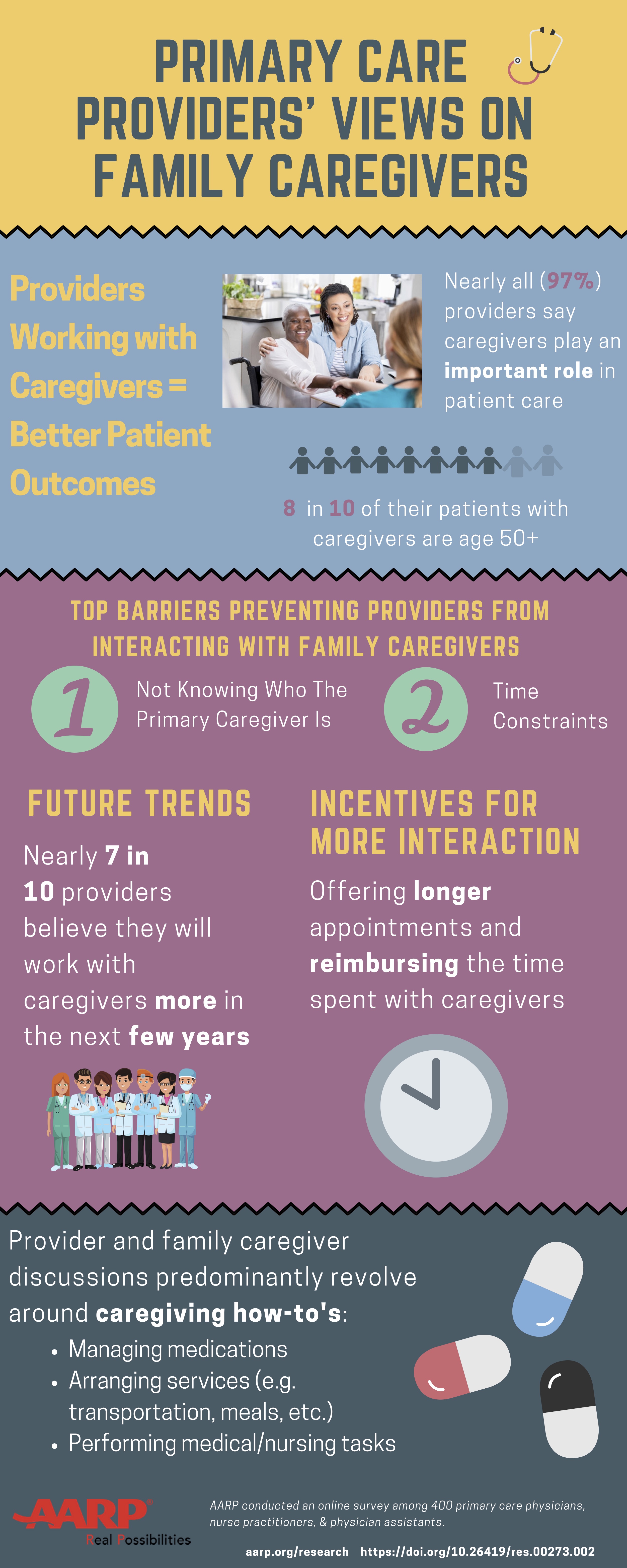
Ron Mori
By Ron Mori
[dropcap]F[/dropcap]rom now through April 15, AARP Primary care providers agree that family caregivers play a vital role in patient care and in better patient outcomes, according to a new survey by AARP Research. However, providers say that time constraints and not knowing who or if there is a family caregiver prevent them from working with family caregivers for more of their patients.I always like to share our latest AARP research on a variety of topics, especially when it comes to caregiving. Recently, AARP Research (https://www.aarp.org/research/) shared results from a survey of 400 primary care physicians, nurse practitioners and physician assistants to understand their perceptions and interactions with family caregivers, as well as their knowledge of available caregiver resources and potential barriers to working with them.
 Physicians find that establishing communication with family caregivers can be challenging, with finding time to connect and other scheduling conflicts getting in the way, the new AARP survey reveals. Most conversations happen in-person or over the phone in 15 minutes or less, while digital communication (online portals, email, etc.) are less common.
Physicians find that establishing communication with family caregivers can be challenging, with finding time to connect and other scheduling conflicts getting in the way, the new AARP survey reveals. Most conversations happen in-person or over the phone in 15 minutes or less, while digital communication (online portals, email, etc.) are less common.
The survey also reveals signs of potential growth and opportunity areas regarding the provider- family caregiver relationship. Most physicians (65 percent) and nurse practitioners/physician assistants (76 percent) expect to be working significantly or somewhat more with caregivers in the future.
In addition, the survey shows how important the caregiver is. Nearly all (97 percent) providers say caregivers play an important role in patient care. An overwhelming percentage of providers (86 percent) express a strong interest in working with family caregivers, and 75 percent are extremely or very confident in their ability to do so.
Among the various health care provider roles, physicians are the most likely to speak with caregivers (84 percent), AARP’s research discovered, followed by nurses (74 percent), nurse practitioners (44 percent) and receptionists (44 percent). This is important to note, with the growing number of caregivers.
“Today, 40 million Americans are caring for aging parents, spouses and other loved ones, and close to half of them are responsible for medical tasks like injections and wound care,” said AARP Executive VP and Chief Advocacy and Engagement Officer Nancy LeaMond. “Delivering more treatment on an outpatient basis means that family caregivers are critical members of patient care teams. The entire health care system — from providers to hospitals to insurers — must recognize family caregivers’ critical role and understand that teaming up with them can improve health outcomes and quality of life for both patients and family caregivers.”
Key Findings
Nearly all primary care providers (97 percent) said that family caregivers play an important part in patient care. They reported that sharing patient information with caregivers leads to better patient outcomes, higher patient and caregiver satisfaction and lower hospital readmission rates. The survey also found that most provider-family caregiver discussions involve instructions on managing medications, performing medical and nursing tasks and arranging transportation, meals and other services.
Barriers to Family Caregiver Interaction
Health-care providers gave the following top reasons for not interacting more with family caregivers:
- Patients had multiple caregivers
- Not aware of caregiver identity
- Fluctuations in caregiver involvement
- Too time consuming
Providers said that lack of time is also a key barrier for nurses and receptionists in working with family caregivers.
Additional Resources
- AARP’s “Prepare to Care: A Resource Guide for Families” is available for free at www.aarp.org/caregiving/prepare-to-care-planning-guide.
- AARP Family Caregiving Resource Center at www.aarp.org/ caregiving.
Ron Mori is a member of the Washington, D.C., JACL chapter and manager of community, states and national affairs — multicultural leadership for AARP.



